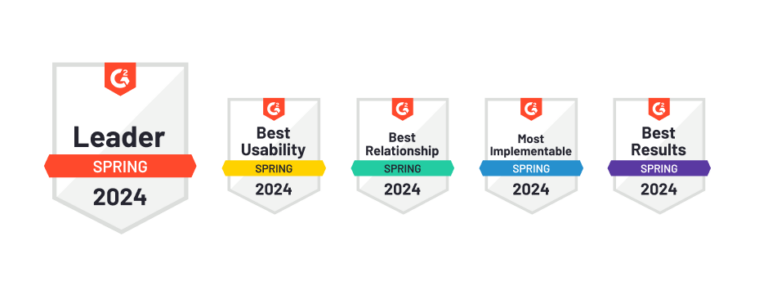We recently shared an article we wrote about the 5 Business Metrics You Should Know. Then we thought about how you can manage these important numbers if you are a FieldPulse customer in a trade or field service business. For those that need a quick FieldPulse reporting update, check out our help article. Reporting pros, let’s dive in!
Booking Rate
What it is: The booking rate is simply a percentage of calls booked versus the number of calls that came in. (Number of Calls Booked) / (Number of Calls Fielded) = (Booking Rate)
Why it matters: Think about all the money you invest in marketing month after month and year after year. You do this to grow your business and profits. Some companies spend 3% to 10% of their total revenue in marketing. If you want to maximize the results of your marketing dollars, then you need to make sure that every potential sales opportunity that it generates is being taken advantage of. A booking rate tells you how effective your sales efforts are.
How to calculate it: Keep a tally of the number of “new business” calls coming into your business each day. A spreadsheet would be ideal. Then, for a specified period, you can run a ‘jobs’ report in FieldPulse to determine how many jobs were booked in that same period. Divide the number of calls booked by the number of “new business” calls in, and you’ll get the percentage booking rate. The jobs report can be generated on this page: https://webapp.fieldpulse.com/reporting/service/general.
Labor Costs
What it is: Labor costs are the total amount of money out the door each month on labor – from your administrative staff to your techs out in the field.
Why it matters: Having more employees than you need can end up costing you your business. But do you have the volume and consistency to match that? Keeping tabs on your labor costs will help to ensure your staff isn’t larger than your business requires.
How to calculate it: In FieldPulse, you can run a report on all of your employees’ timesheets for a specified period, and multiply the total hours for each team member by their hourly wage. It might be helpful to export the timesheets report to a spreadsheet so you can calculate the total cost per team member directly from that sheet. You can run a timesheets report here: https://webapp.fieldpulse.com/reporting/timesheet/list.
Profit Margins
What it is: Profit margin is the amount of money you’re making on each job, after all costs have been considered. It’s calculated as: Total revenue – Total cost.
Why it matters: Profit margins matter for so many important reasons. First, profit margins can inform your revenue-related decisions about how you price your services, which jobs or customers you prioritize, how you bundle services, and opportunities around fees and discounts. Secondly, profit margins provide insights about the cost side of your business.
Thin profit margins in a low- or no-revenue growth situation should cause you to explore more aggressive cost-cutting initiatives or perhaps to spend more on growth-generating initiatives if you feel that there is opportunity in the market. This business metric will help you to do things like weed out “bad work” or focus on finding “better work”.
How to calculate it: To calculate your profit margin on each job, you can use FieldPulse’s built in ‘Cost Basis’ feature. It will allow you to enter your costs for each item on an estimate or invoice and automatically calculate the profit margin for each job. It even breaks down the profit margin by ‘product’ costs and ‘service’ costs. You can learn how to use the cost basis feature here: http://help.fieldpulse.com/how-to-articles/estimates-and-invoices/cost-basis-and-invoice-profitability.
Material Markups
What it is: Material markups are the total markup you’re applying to the materials used for the job – drywall, wire, paint, equipment, etc.
Why it matters: A lot of companies pride themselves on not marking up their materials, or only marking up a small percentage. This can be fine if you have a high hourly rate that you charge on your labor. However many companies have realized the importance in charging a 30%, 50%, or even 100% markup on the cost of materials. Time procuring materials is time you’re paying for.
How to calculate it: You can use “cost basis” to calculate your material markups automatically. When you add materials into FieldPulse as ‘Invoice items’ and mark them as “Product”, it automatically tracks your profit margin on just the “product” or material part of each invoice.
Advanced:
For those of you who want even more information about your business, you should be tracking Revenue Per Lead (RPL)
Revenue Per Lead (RPL)
What it is: Revenue Per Lead (RPL) is a simple calculation that provides you with tremendous insights into your sales/field team’s performance. Total Revenue / Total Opportunities (Leads) = Revenue per lead.
Why it matters: By knowing the Revenue Per Lead (RPL) of each member on your team you will quickly be able to identify your best performers and optimize your sales process.
How to calculate it: To calculate RPL you need to identify how many qualified opportunities you have for the day, week, or month (or whatever time period you want to track) and then calculate how much revenue these new sales opportunities yielded for each salesperson. You’ll have to track your total number of leads per salesperson. So to do this in FieldPulse, you’ll want to set up a new job for each new lead (customer) that comes in.
Make sure you title each of these jobs something unique, like LEAD. Assign these jobs to the salesperson responsible for them. Then you can run a ‘jobs’ report for a specified period and filter it by job title (LEAD) and team member (that salesperson) to determine how many leads they had in that particular period. You can run the jobs report here: https://webapp.fieldpulse.com/reporting/service/general.
Once you have your total number of leads, you can use our reporting tool to see how much revenue was brought in during the same period, by each salesperson. You’ll get this revenue number by running a report on all paid invoices for a particular period, filtered by ‘Team Member’.
You can generate this report here: https://webapp.fieldpulse.com/reporting/invoice/general.
That’s it! Those are five metrics that you should be tracking in your service business, and how to keep calculate them in FieldPulse. If you have any questions about generating these numbers and using reporting in FieldPulse, please email us: [email protected].


